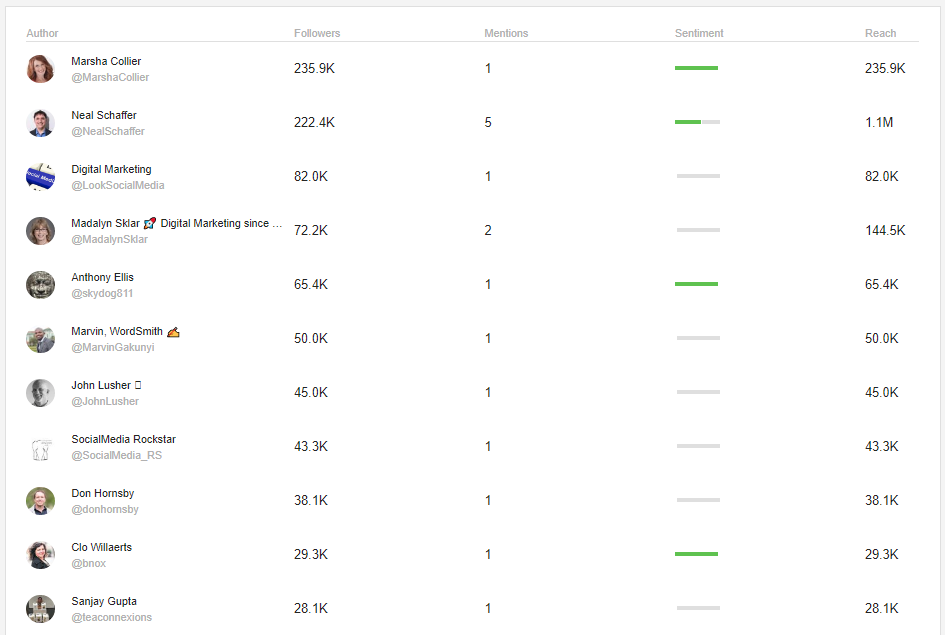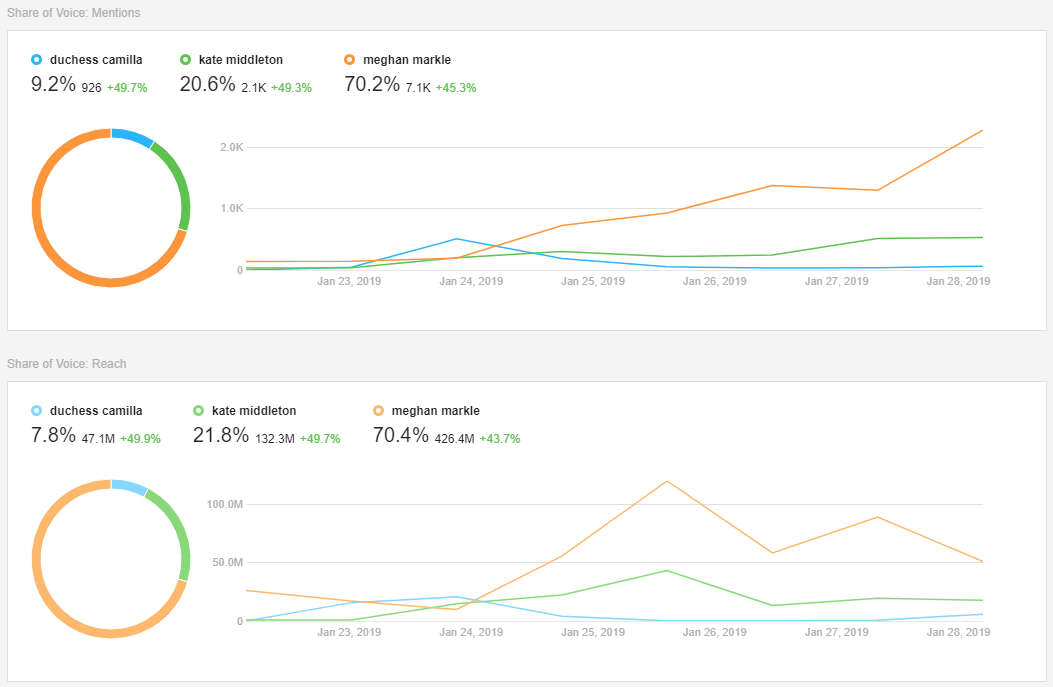Social listening for startups: marketing on a budget

Getting your product out there is a process that takes time, effort, and creativity. It also takes money that startups don’t usually have. This is why startups require tactics that are cheap and can help to achieve more than one or two marketing goals. Social listening is one of those tactics.
Social listening is incredibly budget-friendly. Our own tool, Awario, starts from $24 a month in a yearly plan. Yet, social listening allows startups to find their target audience, generate leads, raise brand awareness, improve customer service and raise engagement, and measure the results of the social media marketing efforts. In this post, I’ll show you how this works.
Social listening is a lot about social media platforms. The reasons behind that are clear: social media is famously one of the most affordable platforms for marketing. A rare startup ignores the overwhelming power of Facebook and Twitter. However, social monitoring goes beyond that, finding marketing opportunities on blogs, forums, news sites, and the web.
With that in mind, here’s how to bring marketing goals to life using just one tool: a social listening tool.
1. Finding your target audience
Defining your target audience and discovering who your target audience actually is is not always the same thing. Sometimes, it turns out that people interested in your product are not the ones you expected to be interested in your product. And sometimes, you have no idea where the guys you’re looking for hang out.
Social listening helps both discovering who your target audience really is and where they are. First, the tool searches for mentions of your brand on social media, news, blogs, and forums. It analyzes the data, letting you know where your brand is mentioned the most: which country, which language, which social media network. That’s how you find out you’re most talked about on Instagram and realize that’s where your marketing efforts should go. Or that your product is weirdly popular in the Philippines.


Second, it defines where on the Internet the type of your product is popular. If, for example, you’re searching for “productivity app”, the tool finds relevant news sites, forums where people discuss them, blog authors that write about them, subreddits that talk about them. That’s where your target audience lives and is ready for you to market to them.

2. Lead generation
Lead generation is one of the most challenging marketing goals. You need as many leads as possible as you never know how many of those leads will turn into customers. Social listening, unexpectedly, has a simple and elegant way of finding “hot” leads on social media. Don’t want to brag (I do, really), but with Awario it’s even simpler and cooler than in other tools: Awario has a unique lead generation module - Awario Leads.
To find leads with Awario, you write product descriptions — 2- to 3-word phrases that best describe your product. Plus, you specify your competitors.
![]()
The tool will combine your product descriptions and competitors' brand names with predictive insights to determine prospects online who are either seeking recommendations about a product or service like yours or are unhappy with your competitors’ products. And that’s how you get results like this one:
![]()
Once you've identified your prospects, the job of a social listening tool is over. It’s up to you to engage with the prospects and turn them into customers. What are the best ways to do that?
Keep in mind that when you get a mention in Awario, you can reply straight from the app using different profiles. So, you can reply as yourself, as someone else in your startup, or as a completely random person on social media that happens to know your product.
In the first case, it makes sense to offer some incentive for the prospect: give them a discount or underline some features that you’re most proud of. In the second case, it’s important to be objective and not make it look like an ad. In both cases, your chances of getting a customer this way are much higher than with traditional advertising methods: first, this is a knowingly hot lead, not just someone who clicked the ad on Google by mistake. Second, people trust other people on social media. They listen to what they have to say.
This is social selling in a nutshell. It’s used by startups as well as large companies. And it's obviously cheap and very effective: according to Hubspot, 78% of sales reps using social media as part of their lead generation process perform better than their peers.
3. Raising brand awareness
Getting your name out there is truly hard. Especially, if your budget is limited and you need the results quickly. Let’s see how social monitoring can help with that.
Influencer marketing
First, social listening tools find your brand's advocates. Brand advocates are people who somehow already know about your product and have mentioned it somewhere on the Internet. In Awario, you can find these people and sort them by the number of their followers. Now that you know who these people are, you can talk to them and make sure they keep promoting your brand to their followers.
Second, social listening tools find social media industry influencers. All you have to do here is also describe your product in 2- or 3-word phrases and the tool will return a list of people with a large following who have talked about this before.

Some assume that working with influencers requires tons of money. Sure, if you're looking to hire a Kardashian family member or the like. In most cases, however, you can find micro-influencers with tens of thousands of dedicated listeners who will talk about your product at a reasonable price in exchange for the access to your product, or even for free if they really like it.
For influencers, it’s important to build their reputation by bringing in new products to their audience, promoting startups and not large companies (not to seem like a sell-out), and so on. So it’s very possible to get a win-win situation with no serious budget involved.
Guest posting
Guest posting is a popular and free way of getting your brand and your word out there. It’s also a proven way of establishing yourself as an opinion leader, which is important in a startup world. It’s also a big part of link building for SEO, the value of which we can’t ignore.
Finding blogs to write for, however, isn’t an easy task. You get top blogs that are impossible to get featured on and that’s pretty much it. With social listening tools, you discover all blogs that at some point have talked about your niche and might do it again. Contacting them will bring you much more guest posting results.
Additionally, you can take your Influencers list, choose to see only Twitter influencers, then go to their Twitter bios and…. There you’ll find links to their blogs. I bet you will.

4. Competitor research
Competitor research is an important part of any strategy. It helps you avoid mistakes, keeps you from reinventing the wheel, inspires you, and allows you to borrow the best tactics and ideas.
With social listening tools, you can monitor competitors' brands in the same way that you monitor your own. You’ll know what social media platforms and what locations work best for them. Using the sentiment analysis, you’ll see at a glance which social media campaigns worked for your common target audience and which were problematic. You’ll see which of their content performs best, where they guest blog, how they promote their content.
Finally, you’ll see the strengths and weaknesses of your competitors’ products and their brand. You’ll know what their customers complain about, what they are particularly satisfied with, what questions they ask. This is a pool for so much product and marketing development!
When your startup gets bigger and brighter, you can also observe the Share of Voice metrics: it will tell you how much of the conversation online is taken by you and by each of your main competitors.

5. Standing out from the crowd
For startups, it’s vital to stand out in some unorthodox ways. Often, it’s about being closer to their customers: something that large companies can’t do simply because they have too many of them. Startups win when they are more authentic, more approachable, and more caring than their large competitors. Here’s how to achieve that with social listening:
Customer service
Too often you'll find that the customer service of large brands is horrible. Maybe, that’s because they have too many customers and can’t deal with all of them. Or they just don’t care about losing one or two. Or something else. But from Netflix to Microsoft, people have complained and complained about customer service. So really, it’s the field where it’s the easiest to become a rockstar.
With social listening tools, you get mentions of your brand and your products (if you choose to). You can reply from one place to complaints, questions, and compliments from all major social media networks. To people that used a @handle and to people that didn’t - a lot of them don’t. To people that expect a reply within thirty minutes and to people that were just ranting to all of their Twitter followers. Your customer service will become a competitive advantage.

Engagement
The same goes for raising engagement - a metric that builds a relationship between the audience and the brand. Social listening tools allow you to engage with people interested in your product, your niche, or are your target audience that’s still unaware that they would benefit from your product, conveniently, from one dashboard. It all depends on what keywords you’re searching for. But approaching your social media with friendliness and humor will bring you followers, leads, and customers.

6. Measuring results
Social media marketing is one of those fields where it’s pretty hard to say if your efforts are paying off. To solve this problem, many social listening tools, including Awario, have built-in analytics. At any point in time, you can look at the Dashboard and see how your number of mentions and their reach are changing, how the sentiment behind your mentions is changing, how your social media campaign or product launch is doing, and so on.

You can also produce gorgeous PDF reports that have all the stats in one place and hang your monthly progress metrics on the wall.
Conclusion:
Most advertising methods are usually unavailable to startups due to budget limits. However, the belief that if you make a good product people will just find out about it themselves and come running to you in ecstasy is still very wrong. So, startups often end up in a terrible situation where marketing is too expensive for them, but without it, they can’t survive. To avoid this scenario, it’s important to use creativity and go for less obvious and less popular marketing methods. And use cheap social media marketing tools that can help you with them.













